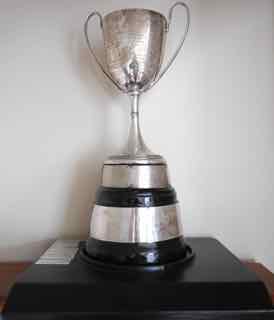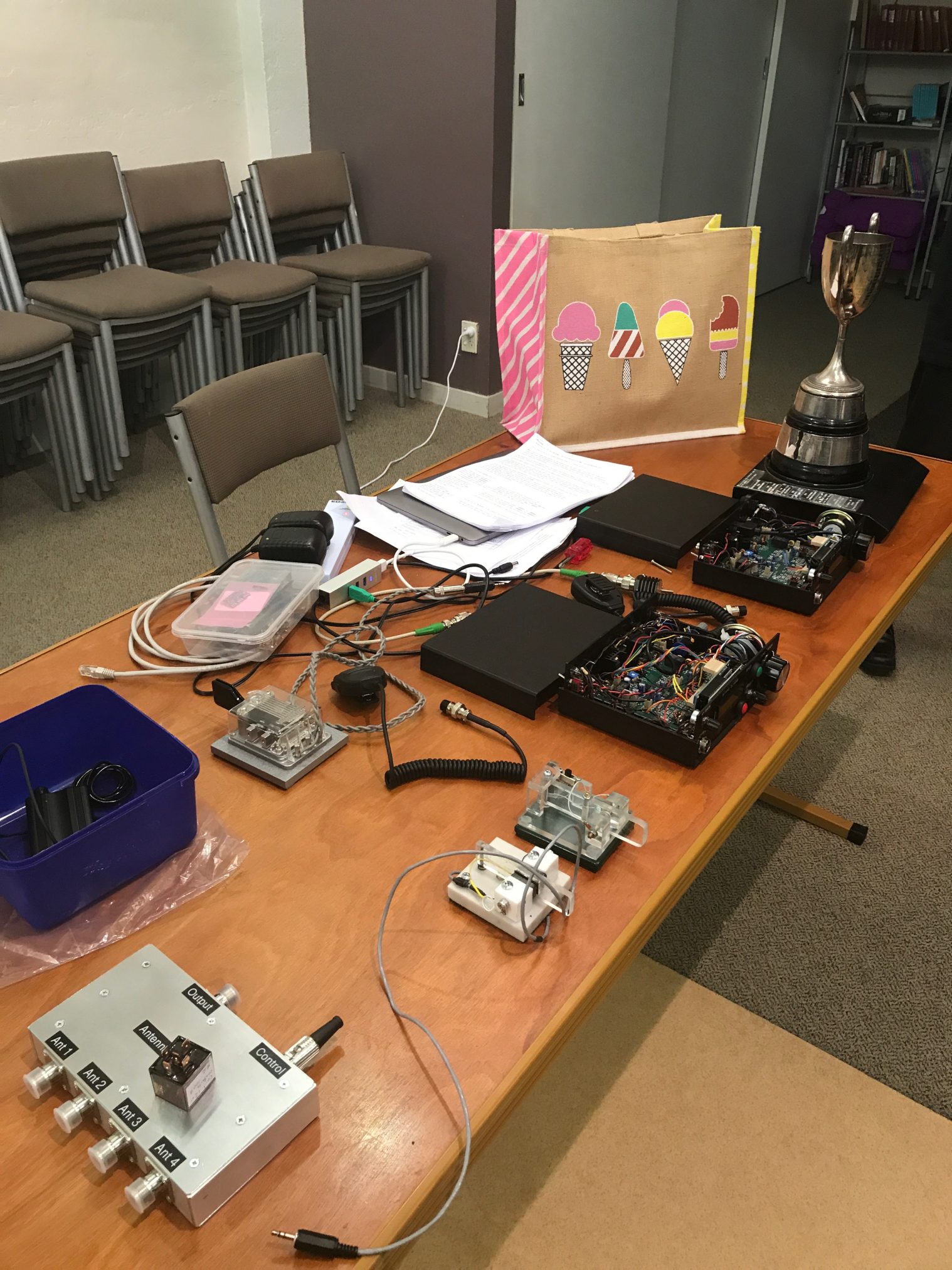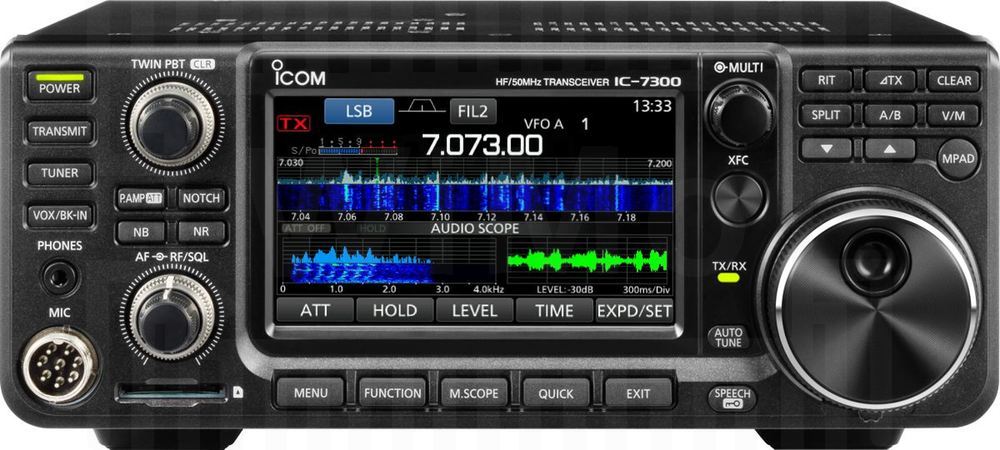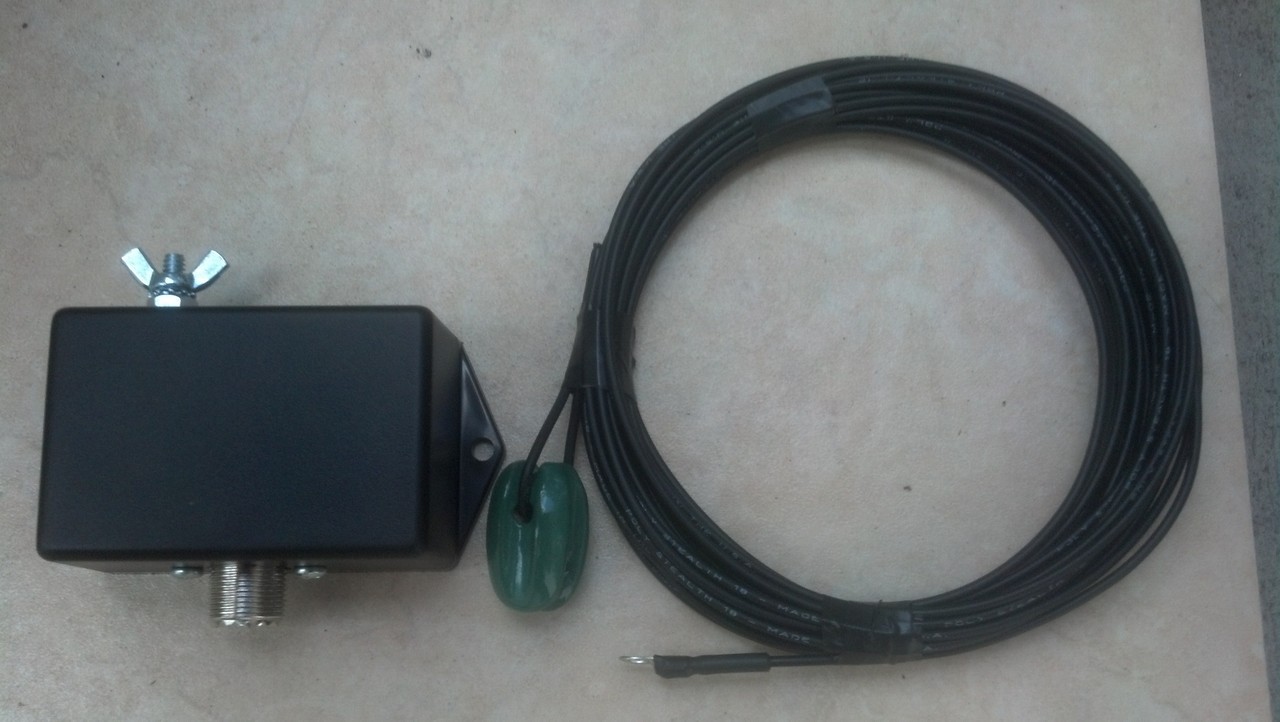 The October meeting featured the annual Blackwood Cup. Three entries were received – one each from Bernard ZL2BD, Ted ZL2TB and Mike ZL1AXG. The trophy went to Mike ZL1AXG for his adaptations of the BITX40 transceiver. But voting was very close. Mike will be writing up his BITX40 mods on the Arduino section of this website as time allows.
The October meeting featured the annual Blackwood Cup. Three entries were received – one each from Bernard ZL2BD, Ted ZL2TB and Mike ZL1AXG. The trophy went to Mike ZL1AXG for his adaptations of the BITX40 transceiver. But voting was very close. Mike will be writing up his BITX40 mods on the Arduino section of this website as time allows.

The other projects included:
- a 4 way antenna switch (from Bernard ZL2BD) which was beautifully presented (the case was made with 2 aluminium channels and a ). Channel isolation was found to be around 70dB (i.e. excellent) with insertion loss in the fractions of 1dB;
- a collection of home brew single lever paddle (from Ted ZL2TB) that use magnetic latching to provide a nice key “feel”. Ted has a few for sale as well if anybody is looking for a nice non-iambic paddle.

 On 19 April 2017 Bernard ZL2BD and Frank ZL2TTS gave us a talk about and subsequently demonstrated this game changing SDR Txcvr from Icom!
On 19 April 2017 Bernard ZL2BD and Frank ZL2TTS gave us a talk about and subsequently demonstrated this game changing SDR Txcvr from Icom! The 15 February regular monthly meeting was held at the Lutheran Church Hall, King St, Mt Cook.
The 15 February regular monthly meeting was held at the Lutheran Church Hall, King St, Mt Cook.